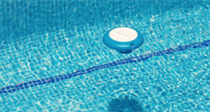Hottub, Swimming Pool
The Hidden Dangers Lurking in Your Spa Pool: Legionella and Beyond
The Hidden Dangers Lurking in Your Spa Pool: Legionella and Beyond
Have you ever wondered about the unseen risks associated with your relaxing spa pool? While a hot tub or spa offers a great way to unwind, it’s essential to understand that these environments can harbour harmful bacteria and other infectious agents if not properly maintained. According to the Health and Safety Executive (HSE) document, spa-pool systems are a “recognised source of diseases caused by infectious agents including the organism that causes legionnaires’ disease, primarily Legionella pneumophila” [1]. This means that regular and thorough maintenance is not just a matter of hygiene, but also of health and safety.
One of the primary concerns is the growth of Legionella pneumophila, the bacteria responsible for Legionnaires’ disease [2]. This bacterium thrives in warm, stagnant water, making spa pools an ideal breeding ground if conditions aren’t properly managed. Other bacteria, such as Pseudomonas aeruginosa and various environmental mycobacteria, can also cause infections [2]. These microorganisms can be introduced from the wider environment, the water source, or even from bathers themselves [3].
Why are spa pools particularly susceptible? Several factors contribute to the risk. Spa pools usually maintain a warm temperature range (20–45 °C), which is ideal for microbial growth [2, 4]. The agitation of the water creates aerosols—tiny water droplets—which can be inhaled, carrying bacteria directly into the lungs [4]. Additionally, the high bather-to-water ratio in spa pools means there’s more organic matter from bathers, such as sweat, skin, and hair, which serve as nutrients for bacteria [5]. As the document states, “the high organic content of spa-pool water makes it difficult to maintain effective disinfection” [4].
What can you do to protect yourself and your family? Regular water testing, proper disinfection, and thorough cleaning are crucial. Understanding the risks is the first step in creating a safer spa environment. Remember, the goal is to create a place of relaxation, not one where health risks are lurking.
FAQs
What is Legionella pneumophila?
Legionella pneumophila is the bacterium that causes Legionnaires’ disease, a serious form of pneumonia [1]. It thrives in warm water systems like spa pools.
What other bacteria can be found in spa pools?
Besides Legionella, other bacteria like Pseudomonas aeruginosa and environmental mycobacteria are commonly found, and can cause skin and respiratory infections [2].
How do these bacteria spread in spa pools?
These bacteria spread through aerosols (tiny water droplets) created by the agitation of the water, which can be inhaled [4].
What are the ideal conditions for microbial growth in spa pools?
Warm water temperatures (20–45 °C) and the presence of nutrients from bathers create ideal conditions for microbial growth [2, 4].
What can I do to reduce the risk of infection in my spa pool?
Regular water testing, proper disinfection, thorough cleaning, and maintaining a balanced water chemistry are essential for reducing the risk [4].








